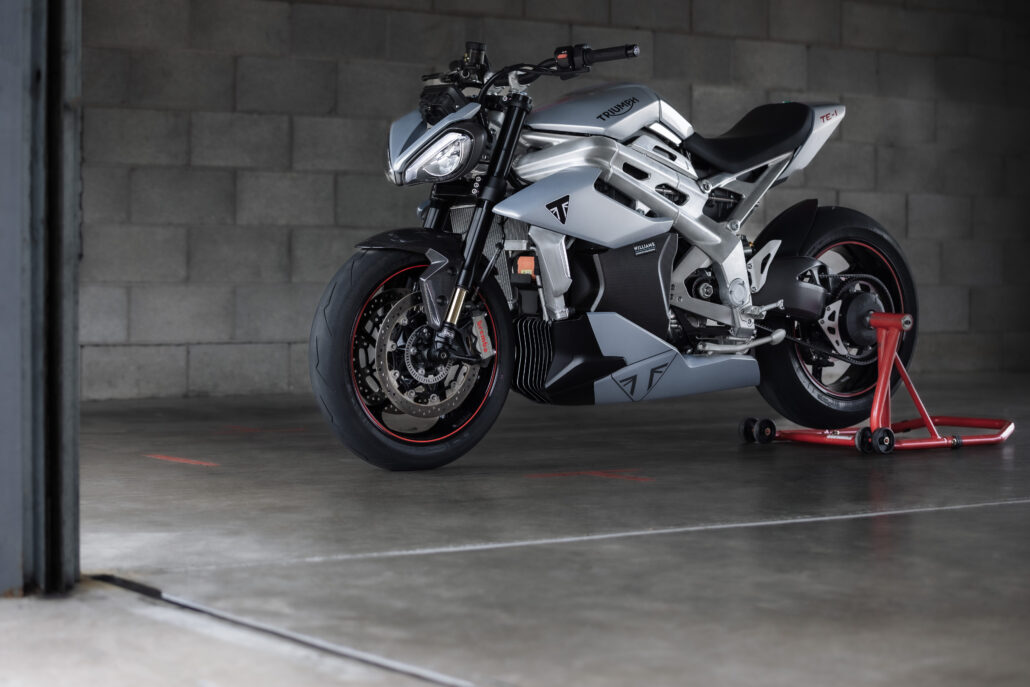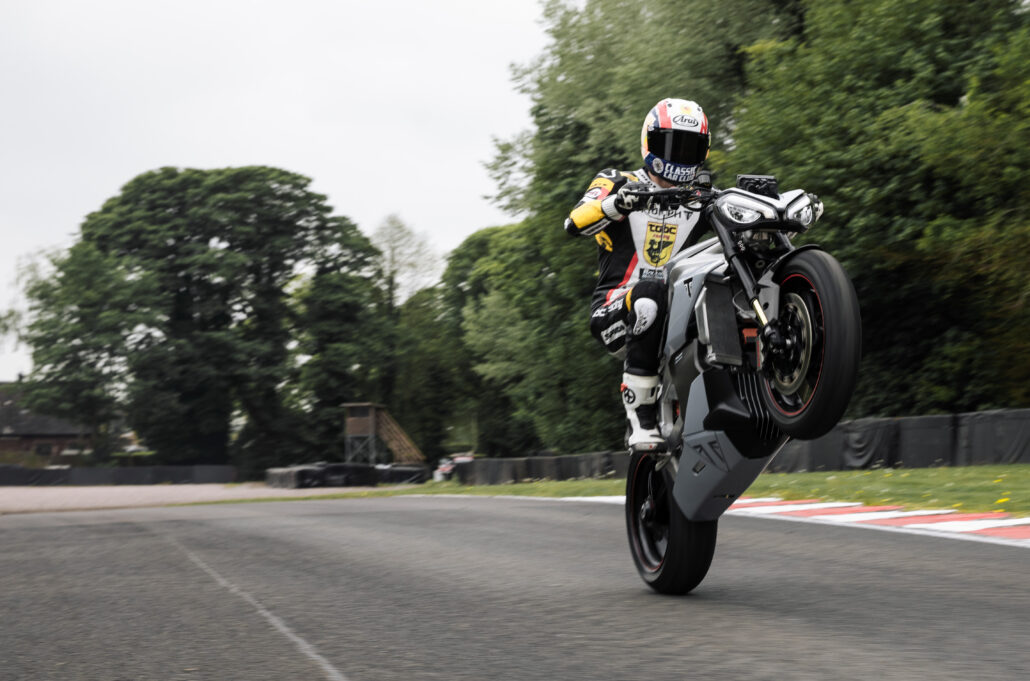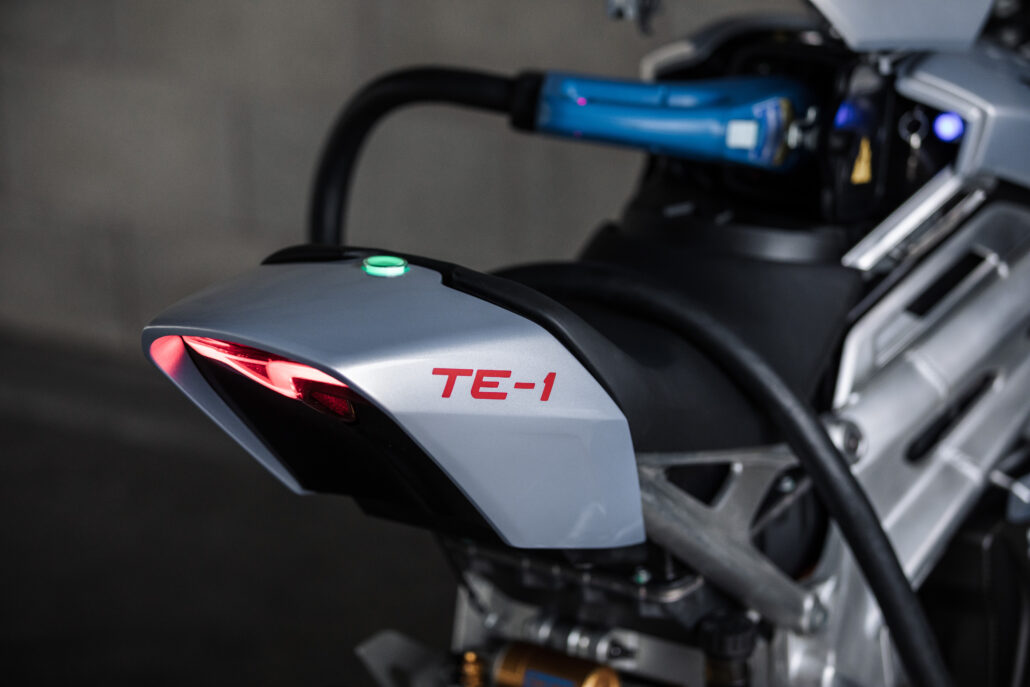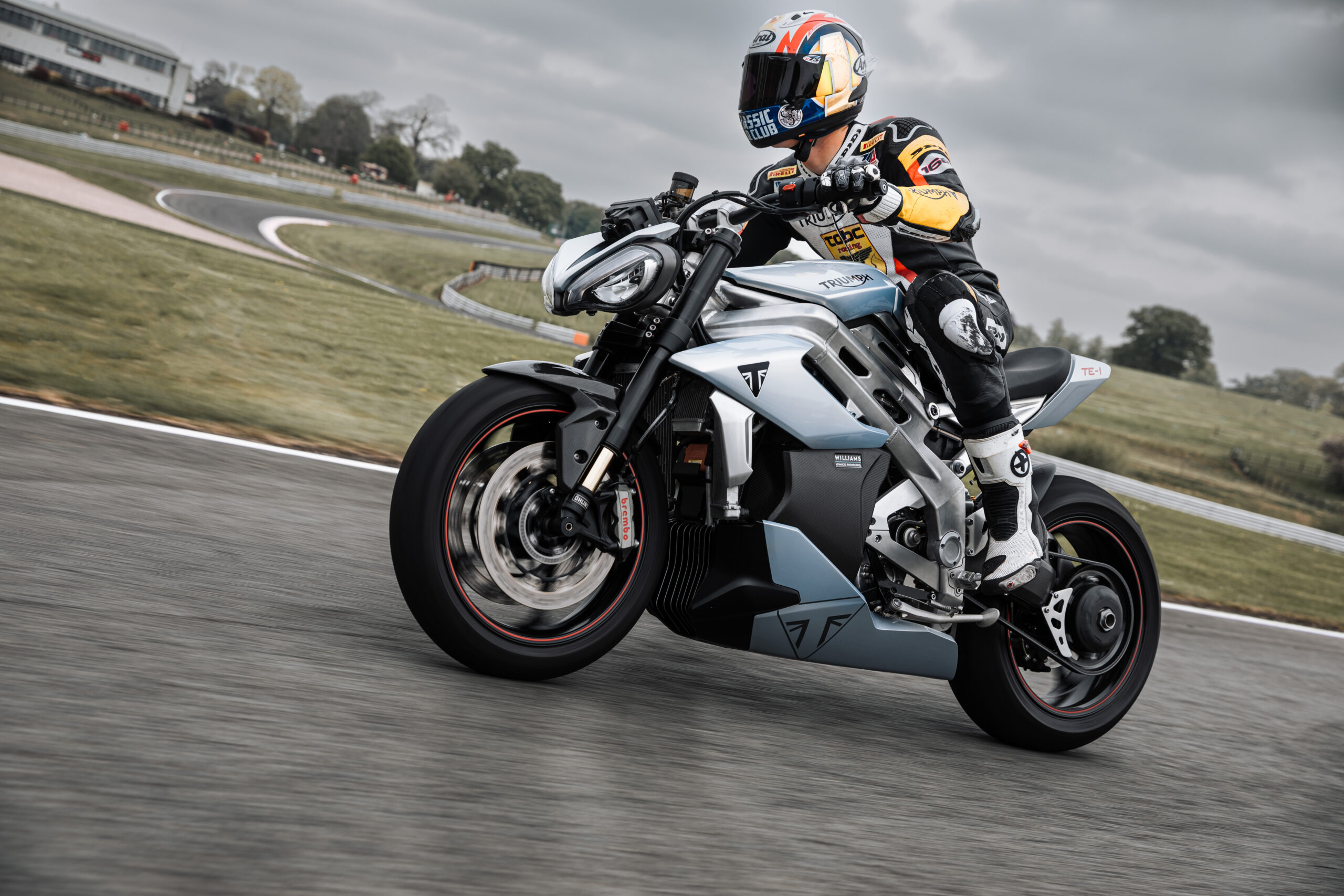
Triumph’s TE-1 electric project has been teased for a while now, but finally we’ve been given some facts on the performance of the British marque’s first foray into the world of electric motorcycles. And if the results are to be believed, this might be the first bike to make the move to battery-powered propulsion a realistic alternative.
Impressive Figures
There’s no denying the similarities between the TE-1 and Triumph’s super-naked Speed Triple, with the overall look of the electric bike obvious styled after Triumph’s legendary street fighter. But it’s not just looks that the ICE and the electric machine share, with the performance figures similar between the two versions.
“The TE-1 produces the equivalent of 175bhp and can go from 0-100km/h in 3.6seconds.”
After Triumph’s latest program of prototype testing, they have revealed the TE-1 produces the equivalent of 175bhp and can go from 0-100km/h in 3.6seconds. Compare that to the 1160cc petrol-powered Speed Triple 1200RS which produces 177.5bhp @ 10,750rpm (the electric bike will produce it from zero…) and can hit 100km/h in 3.2seconds, and there’s not much to split between the two.

The downfall of many electric cars and motorcycles is the weight of the batteries, but Triumph in conjunction with Williams Advanced Engineering have developed a special battery for the TE-1 which is not only lighter but also offers ground-breaking charging performance.
Triumph claims the TE-1 weighs 220kg, which is a respectable weight within the class of petrol-powered machines (the RS is 198kg), and 25% lighter than comparable electric motorcycles in the class according to Triumph. But that’s not the best bit. Triumph claim the new battery can be charged from 0-80% in a ‘game-changing’ time of 20-minutes, suddenly making the prospect of owning and using an electric vehicle much more attractive. Let’s face it, most coffee stops last longer than that!
And finally there’s the range, with the TE-1 claimed to travel 161km in ‘real world’ testing projections. Adding to the range is a regenerative braking package which Triumph say has ‘scope for further optimisation.’ They also believe that there is the opportunity for greater efficiencies in the motor generator unit and transmission, which could result in improved range when we see Triumph electric motorcycles make it to showrooms.

Speaking at the release, Dyrr Ardash, Head of Strategic Partnerships, Williams Advanced Engineering commented, “WAE are delighted to have been involved in this exciting programme to deliver the TE-1 prototype. Since its conception in 2018, all the partners have worked with collaboration, innovation and passion to bring the boundary breaking prototype to life. It is pleasing to hear positive rider comments which confirms that the dynamics of the bike are aligned with Triumph’s DNA. This has been underpinned by the class-leading Battery and Control System that WAE has produced within a lightweight and integrated package. This core WAE technology has allowed us to exceed performance and charging targets for the battery which we look forward to seeing in future powertrains.”
Nick Bloor, CEO, of Triumph Motorcycles said,“We are incredibly proud to be able to share such positive outcomes from the completion of Project Triumph TE‑1, where the prototype demonstrator has exceeded many of our initial targets and expectations. Everyone on the team is thrilled with the results we have achieved with our partners, and how the outcomes of the project will feed into the electric future to come from Triumph.”
While the eventual model released is likely to be slightly different to the prototype, we expect the Speed Triple DNA to be very much at the forefront of Triumph’s electric models when they eventually make it to market. And with the way that technology is moving forward, we can expect even more impressive figures too.



